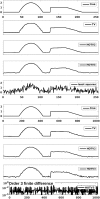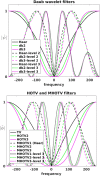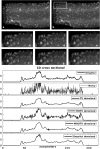Multiscale higher-order TV operators for L1 regularization
- PMID: 30416939
- PMCID: PMC6208801
- DOI: 10.1186/s40679-018-0061-x
Multiscale higher-order TV operators for L1 regularization
Abstract
In the realm of signal and image denoising and reconstruction, regularization techniques have generated a great deal of attention with a multitude of variants. In this work, we demonstrate that the formulation can sometimes result in undesirable artifacts that are inconsistent with desired sparsity promoting properties that the formulation is intended to approximate. With this as our motivation, we develop a multiscale higher-order total variation (MHOTV) approach, which we show is related to the use of multiscale Daubechies wavelets. The relationship of higher-order regularization methods with wavelets, which we believe has generally gone unrecognized, is shown to hold in several numerical results, although notable improvements are seen with our approach over both wavelets and classical HOTV. These results are presented for 1D signals and 2D images, and we include several examples that highlight the potential of our approach for improving two- and three-dimensional electron microscopy imaging. In the development approach, we construct the tools necessary for MHOTV computations to be performed efficiently, via operator decomposition and alternatively converting the problem into Fourier space.
Keywords:
Figures








References
-
- Rudin LI, Osher S, Fatemi E. Nonlinear total variation based noise removal algorithms. Physica D Nonlinear Phenomena. 1992;60(1):259–268. doi: 10.1016/0167-2789(92)90242-F. - DOI
-
- Wei S-J, Zhang X-L, Shi J, Xiang G. Sparse reconstruction for SAR imaging based on compressed sensing. Prog Electromagn Res. 2010;109:63–81. doi: 10.2528/PIER10080805. - DOI
-
- Bhattacharya, S., Blumensath, T., Mulgrew, B., Davies, M.: Fast encoding of synthetic aperture radar raw data using compressed sensing. In: IEEE 2007 IEEE/SP 14th workshop on statistical signal processing, pp. 448–452 (2007)
LinkOut - more resources
Full Text Sources
